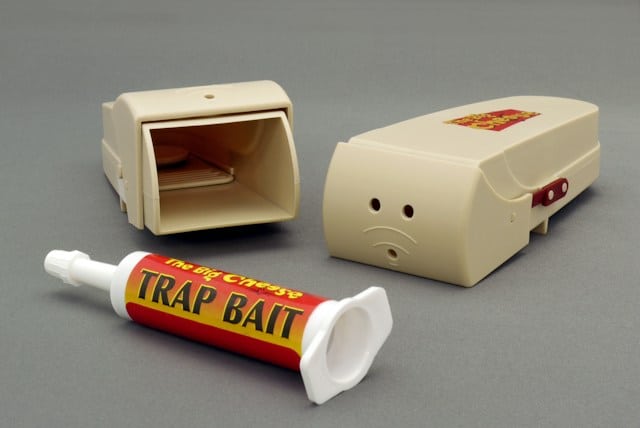How to Set Up a Humane and Effective Mousetrap?

When you’ve got a mouse in the house, it’s not just those tiny, furry critters you have to worry about. Mice, while small and seemingly harmless, can cause significant damage to your property and can also carry diseases. But here’s the good news. You don’t have to resort to harmful methods to get rid of them. Setting up a humane mousetrap may sound complicated, but it’s actually quite simple and effective. Let’s embark on this journey to learn how to catch these uninvited guests without causing them harm.
1. Selecting the Right Mousetrap
Choosing the right mousetrap is the first crucial step. When you search on Amazon, you’ll encounter a multitude of options varying in design, size, and mechanism. However, for a humane solution, opt for live-catch or catch and release traps. Brands like Victor offer a variety of humane mousetraps that are easy to set and use.
A lire aussi : Aggressive behavior in cats: Causes and solutions
These traps are designed to capture mice without killing or harming them. They work by luring the mouse into the trap with bait, and once the mouse steps inside, the door closes behind, effectively trapping it. The trapped mouse can then be released safely into the wild, away from your property.
2. Choosing the Right Bait
Now that you’ve selected your humane mousetrap, the next step is to choose the right bait. This might surprise you, but mice are not just attracted to cheese, as popular culture often suggests. In fact, mice have diverse food preferences. They are omnivores, which means they eat both plants and animal-based food.
Lire également : How to Choose and Care for a Therapy Bunny?
For the best results, use high-protein baits like peanut butter, hazelnut spread, or even wet pet food. You can also use cotton balls or feathers as nesting materials, which will attract female mice, especially during breeding season.
Remember to use a small amount of bait. You want the mouse to step fully into the trap to trigger it, not just reach in and snatch the bait.
3. Properly Placing Your Mousetrap
The placement of your mousetrap can make or break your mouse-catching efforts. Mice typically scurry along the edges of walls and seldom venture into open areas. So, the best place to set your trap is along the wall where you’ve noticed mouse activity.
Place the baited end of the trap nearest to the wall so that the mouse can easily smell and access the bait. Make sure to position the trap in a way that does not obstruct their path, and wherever possible, set multiple traps in different locations to increase your chances of catching the mice.
4. Setting and Monitoring Your Trap
Once you’ve placed your baited trap, it’s time to set it. Each trap will have slightly different instructions, so be sure to read the manufacturer’s guidelines. Generally, live-catch traps are pretty straightforward to set. You just need to open the door or doors (some models have two), set the trigger mechanism, and wait.
It’s important to monitor your traps regularly. An unchecked trap could result in a mouse being trapped without food or water for an extended period, which is not humane. Check your traps at least twice a day, and if you have a catch, release the mouse as soon as possible.
To release the mouse, take the trap to a location at least a mile away from your property to ensure the mouse doesn’t find its way back. Then, simply open the door of the trap, and the mouse will scurry out.
5. Implementing Additional Control Measures
While a humane mousetrap is an effective way to catch and release mice from your home, it’s also important to implement additional control measures to prevent future infestations. This includes sealing any cracks or holes in your walls, doors, or windows, keeping your food properly stored and sealed, and maintaining a clean environment.
Remember, prevention is always better than cure. By taking these steps, you’re not only ensuring a mouse-free home but also creating a more sanitary and safe environment for you and your loved ones.
So, get your humane mousetrap from Amazon, bait it, place it, and wait. With the right tools and techniques, you’ll be on your way to effectively controlling your mouse problem in the most compassionate and humane way possible.
6. Understanding When to Seek Professional Help
There may come a point where, despite your valiant efforts, the mice seem to be winning the battle. In such circumstances, it’s good to acknowledge when you need to bring in the experts. Pest control professionals have the necessary tools, knowledge, and experience to effectively handle a pest infestation.
If you notice that the number of mice in your property is not decreasing despite setting multiple traps, or if you spot baby mice, it’s time to call a professional. Baby mice indicate a breeding population, which may be more difficult to control.
Look for local pest control services that practice humane removal strategies. Ask them about their process and make sure they’re committed to catching and releasing the mice, not exterminating them. After all, the goal is to rid your property of these critters in a compassionate way.
Remember, professionals are trained to handle such situations and can provide a long-term solution. This might include identifying potential entry points, providing advice on preventive measures, and even cleaning up mouse droppings, which can carry diseases.
7. Regularly Maintaining and Cleaning Your Traps
Proper maintenance and cleaning of your mouse traps play an important part in this effort. Not only does it ensure the effectiveness of the traps, but it also is crucial from a hygiene perspective. Once you have catch and release a mouse, make sure to clean the trap thoroughly before reusing it.
When cleaning, be sure to wear gloves to protect yourself from any potential diseases that the mouse might have carried. Use a mixture of bleach and water to disinfect the trap. Rinse it thoroughly and let it dry completely before setting it up again. This step is crucial as any moisture remaining in the trap can deter mice from entering it.
If you’re using bait like peanut butter or other food items, it’s good practice to replace it every two days. This ensures that the bait remains fresh and appealing to the mice.
Conclusion
Setting up a humane mouse trap is not just about catching these small intruders, but also ensuring their safe and unharmed release. It’s a process that requires patience, attentiveness, and a degree of care.
From selecting the trap and the right bait to deciding on its placement and maintenance, each trap step is crucial. Monitoring your traps, releasing the caught mouse in a safe and distant location, and maintaining cleanliness are important to prevent any harm to the mouse and any potential harm to you.
Remember, the objective is to solve the mouse problem in your property while causing minimal stress to these creatures. With this guide, you are now equipped to handle your mouse situation in a compassionate, humane, and effective way. Don’t forget to take preventive measures to avoid future infestations, and when necessary, don’t hesitate to seek professional help.
Let’s make our homes and this world a better place by practicing kindness, even when dealing with pests. Because, after all, every life matters.
